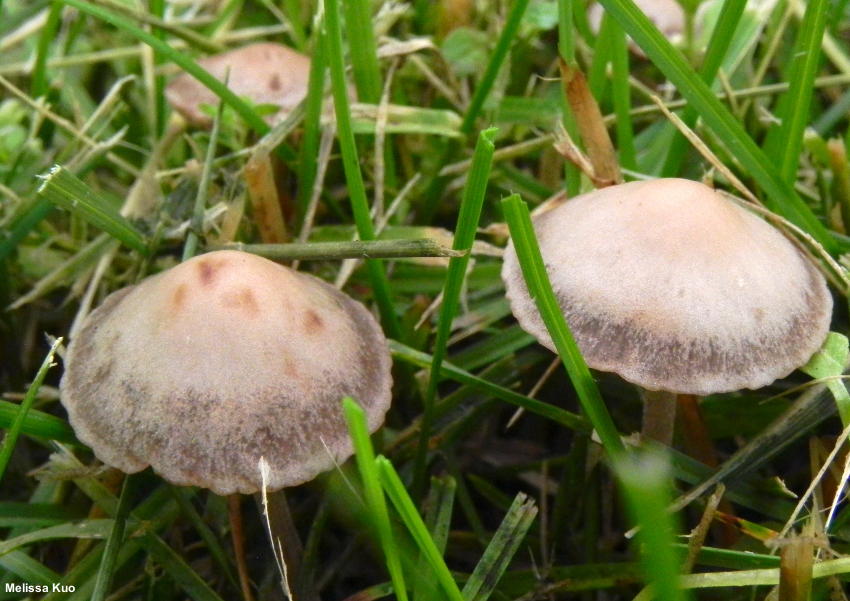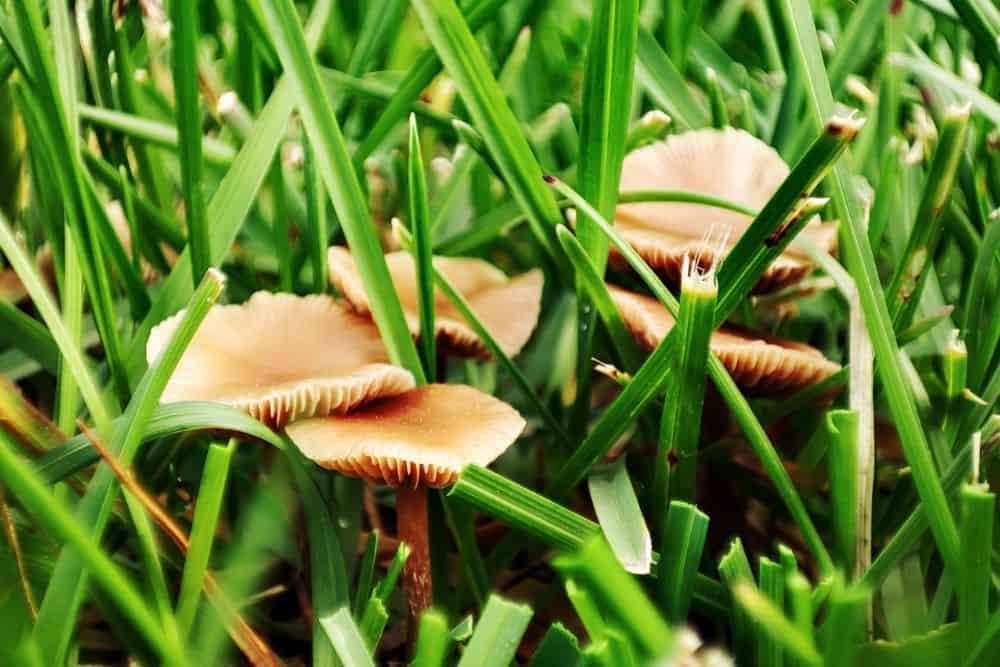What Are Those Mysterious Brown Growths?
Dark brown mushrooms in lawns can be a sudden and unwelcome surprise for homeowners. One day, the lawn is lush and green, and the next, strange brown growths have appeared seemingly out of nowhere. These unwanted visitors can cause concern and raise questions about the health and safety of the lawn. But what exactly are these dark brown mushrooms, and how do they end up in our yards? There are several types of mushrooms that can grow in lawns, including the common button mushroom, the portobello mushroom, and the honey mushroom. While some mushrooms are harmless, others can be toxic to pets or children, making it essential to identify and address the issue promptly.
How to Identify Dark Brown Mushrooms in Your Lawn
Identifying dark brown mushrooms in lawns can be a crucial step in addressing the problem. These mushrooms can vary in size, shape, and color, making it essential to know what to look for. Typically, dark brown mushrooms in lawns are between 3-6 inches in diameter and have a cap that is rounded or bell-shaped. They often have a distinctive brown or tan color, although some may appear more grayish or black. One of the most distinctive features of dark brown mushrooms is their gills, which are usually dark brown or black and attach to the stem. To distinguish dark brown mushrooms from other types, look for these characteristic features and take note of their growth patterns. For example, some mushrooms may grow in clusters or rings, while others may appear solitary. By knowing what to look for, homeowners can quickly identify dark brown mushrooms in their lawns and take steps to address the issue.
The Causes of Dark Brown Mushrooms in Lawns
Dark brown mushrooms in lawns often appear suddenly, leaving homeowners wondering what triggered their growth. In most cases, these unwanted visitors are a sign of underlying issues with the lawn’s environment. Overwatering is a common cause of dark brown mushrooms in lawns, as it creates an ideal environment for fungal growth. Poor drainage can also contribute to the problem, as waterlogged soil provides a perfect breeding ground for mushrooms. Decaying organic matter, such as dead leaves or branches, can also fuel the growth of dark brown mushrooms. When these conditions are present, they create an ideal environment for mushroom growth, allowing dark brown mushrooms to thrive in lawns. By addressing these underlying issues, homeowners can prevent the growth of dark brown mushrooms and maintain a healthy, mushroom-free lawn.
Are Dark Brown Mushrooms in Lawns Harmful?
One of the primary concerns for homeowners when dealing with dark brown mushrooms in lawns is whether they pose a risk to pets, children, or the lawn itself. The good news is that most dark brown mushrooms in lawns are not toxic and do not pose a significant threat to human or animal health. However, it’s still important to exercise caution when dealing with these mushrooms, as some species can cause gastrointestinal upset if ingested. Additionally, dark brown mushrooms in lawns can also cause aesthetic issues, such as discoloration and uneven growth, which can negatively impact the overall appearance of the lawn. In rare cases, certain species of mushrooms can also infect grass and other plants, leading to further lawn damage. By understanding the potential risks associated with dark brown mushrooms in lawns, homeowners can take steps to address the issue and maintain a healthy, safe outdoor space.
How to Get Rid of Dark Brown Mushrooms in Your Lawn
Removing dark brown mushrooms in lawns requires a combination of physical removal, improving drainage, and reducing moisture levels. One of the most effective ways to get rid of dark brown mushrooms is to physically remove them by hand or with a tool, making sure to wear gloves to avoid skin irritation. It’s also essential to improve drainage in the lawn by aerating the soil, installing French drains, or adjusting the grading of the lawn. Reducing moisture levels can be achieved by adjusting watering schedules, improving air circulation, and reducing shade. Additionally, applying a fungicide specifically designed for lawn mushrooms can help prevent their return. However, it’s crucial to note that fungicides should be used sparingly and only as a last resort, as they can harm beneficial microorganisms in the soil. By taking a multi-faceted approach to removal and prevention, homeowners can effectively get rid of dark brown mushrooms in lawns and maintain a healthy, mushroom-free outdoor space.
Lawn Care Tips to Prevent Dark Brown Mushrooms
To prevent the growth of dark brown mushrooms in lawns, it’s essential to maintain a healthy lawn through proper care and maintenance. One of the most critical steps is to mow the lawn regularly, as tall grass can create a humid environment that fosters mushroom growth. Additionally, watering the lawn properly is crucial, as overwatering can lead to an ideal environment for dark brown mushrooms in lawns. It’s recommended to water the lawn deeply but infrequently to encourage deep root growth and reduce the risk of mushroom growth. Fertilizing the lawn with a balanced fertilizer can also help promote healthy grass growth and reduce the likelihood of dark brown mushrooms. Furthermore, aerating the soil and dethatching the lawn can help improve air circulation, reduce moisture levels, and prevent the growth of dark brown mushrooms. By following these lawn care tips, homeowners can create an environment that discourages the growth of dark brown mushrooms in lawns and promotes a healthy, thriving outdoor space.
Common Mistakes to Avoid When Dealing with Lawn Mushrooms
When dealing with dark brown mushrooms in lawns, it’s essential to avoid common mistakes that can exacerbate the problem or create new ones. One of the most significant mistakes is using harsh chemicals to kill the mushrooms, which can harm the lawn, pets, and children. Instead, it’s recommended to focus on addressing the underlying causes of the problem, such as poor drainage and overwatering. Another mistake is ignoring the problem, hoping it will resolve itself. However, dark brown mushrooms in lawns can spread quickly, and ignoring the issue can lead to a larger infestation. Additionally, using a lawn mower to chop up the mushrooms can spread the spores, making the problem worse. It’s also crucial to avoid over-fertilizing, as this can create an environment conducive to mushroom growth. By avoiding these common mistakes, homeowners can effectively deal with dark brown mushrooms in lawns and maintain a healthy, thriving outdoor space.
Maintaining a Mushroom-Free Lawn for the Long Term
To maintain a healthy, mushroom-free lawn over the long term, it’s essential to establish a regular maintenance routine. This includes regular mowing, watering, and fertilizing, as well as monitoring the lawn for signs of dark brown mushrooms in lawns. By catching the problem early, homeowners can prevent the mushrooms from spreading and take prompt action to address the underlying causes. Additionally, incorporating beneficial microorganisms into the soil can help to break down organic matter and reduce the risk of mushroom growth. Regular aeration and dethatching can also help to improve air circulation and reduce moisture levels, making it more difficult for dark brown mushrooms in lawns to grow. By following these tips and maintaining a healthy lawn, homeowners can enjoy a beautiful, mushroom-free outdoor space for years to come.






